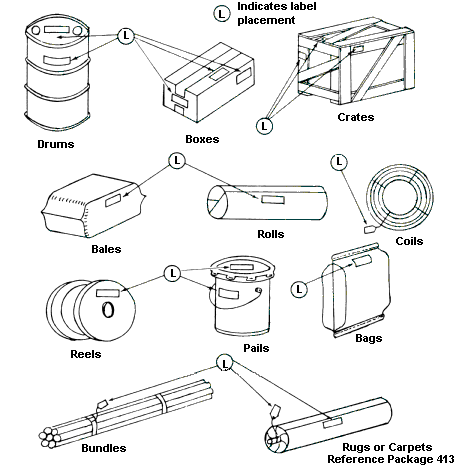When possible, heavy, bulky items should be placed on pallets for improved handling. To maximize carton strength, stack cartons on the pallet vertically. You can secure cartons to a pallet with banding, shrink-wrap, stretch-wrap, or breakaway adhesive.
Cartons should be stacked squarely on the skid, with no overhang. Box flaps and corrugations should face up. Make the top surface as flat as possible. The pictures below should help you visualize the best way to package and secure your goods. Stacking strength is lost when pallets are improperly loaded.
Pallet overhang loses up to 32% of carton strength. Interlocked pattern loses up to 50% of carton strength. Misalignment loses up to 30% of carton strength.
Damage can occur if cartons overhang the pallet, because there is no support for the freight in transit. Damage can occur when a pallet doesn’t have a flat top surface. Place single containers on an outside corner or ship them loose. Loads made from different size containers may not be uniform enough to have unit strength.
Use Shrink Wrap
Shrink wrap is a common and effective method of keeping all pieces of a shipment together. Be sure to include the pallet when wrapping the shipments. Start at the bottom of the pallet and continue wrapping upward around the load. This prevents the shipment from shifting or slipping off of the pallet and potentially damaging the cartons or other freight.
Pallet packaging tips
- Always use pallets that are in good condition and strong enough to support and secure your products
- Do not overload a pallet with weight, height or volume as this can lead to the pallet collapsing and / or your load moving
- Using masonite sheets or similar products on the top of your pallet will provide extra protection from other freight that may be loaded on top during transit
- When stacking cartons onto pallets, make sure they are packed tightly and tie stacked from layer to layer. Avoid any overhang as this can put the freight at risk of being exposed to potential damage from other loaded freight
- Where possible protect your products with some outer packaging (e.g. cardboard, bubble wrap or plastic wrap) as this will prevent rubbing, scratching or marking your product
- Banding or strapping is recommended for heavy items to secure them to the pallet
- If your goods are fragile or top load only, use stickers to identify and determine the best means of safely transporting your freight.

Unconventional packing
- When unconventional items are consigned it is recommended that alternative packing methods are used to ensure safe handling and transport
- Items that cannot be lifted by a forklift should be clearly noted at the time of booking. The freight should be marked in bold writing with correct lifting instructions. These instructions must also be noted on the consignment note
- If specialized lifting equipment is required, please give advance notice to allow us to make the correct arrangements. Please note that such provisions may incur additional charges.
An excellent rule of thumb: Can your item be dropped from 12 inches and not get damaged? How about: Can it be forklifted without being damaged?
If you answer no to either one of those questions, you need to fix it

